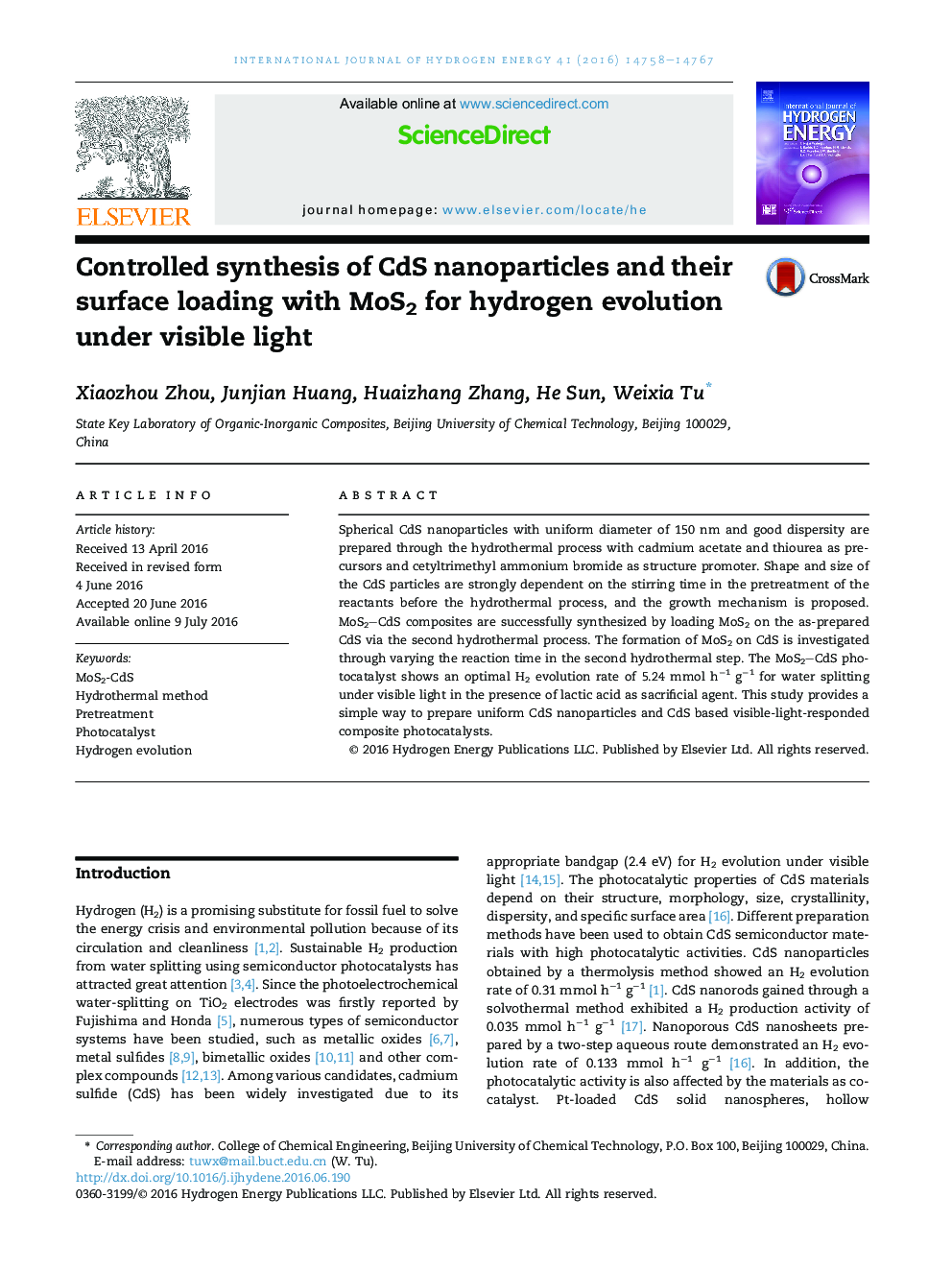| Article ID | Journal | Published Year | Pages | File Type |
|---|---|---|---|---|
| 1269352 | International Journal of Hydrogen Energy | 2016 | 10 Pages |
•Uniform spherical CdS nanoparticles are synthesized by controlled hydrothermal method.•The pretreating stirring process greatly affects the formation of the CdS particles.•The hydrothermal loading time of MoS2 on the CdS dominates property of the composites.•The MoS2CdS shows a H2 evolution rate of 5.24 mmol h−1 g−1 under visible light.
Spherical CdS nanoparticles with uniform diameter of 150 nm and good dispersity are prepared through the hydrothermal process with cadmium acetate and thiourea as precursors and cetyltrimethyl ammonium bromide as structure promoter. Shape and size of the CdS particles are strongly dependent on the stirring time in the pretreatment of the reactants before the hydrothermal process, and the growth mechanism is proposed. MoS2CdS composites are successfully synthesized by loading MoS2 on the as-prepared CdS via the second hydrothermal process. The formation of MoS2 on CdS is investigated through varying the reaction time in the second hydrothermal step. The MoS2CdS photocatalyst shows an optimal H2 evolution rate of 5.24 mmol h−1 g−1 for water splitting under visible light in the presence of lactic acid as sacrificial agent. This study provides a simple way to prepare uniform CdS nanoparticles and CdS based visible-light-responded composite photocatalysts.
Graphical abstractFigure optionsDownload full-size imageDownload as PowerPoint slide
